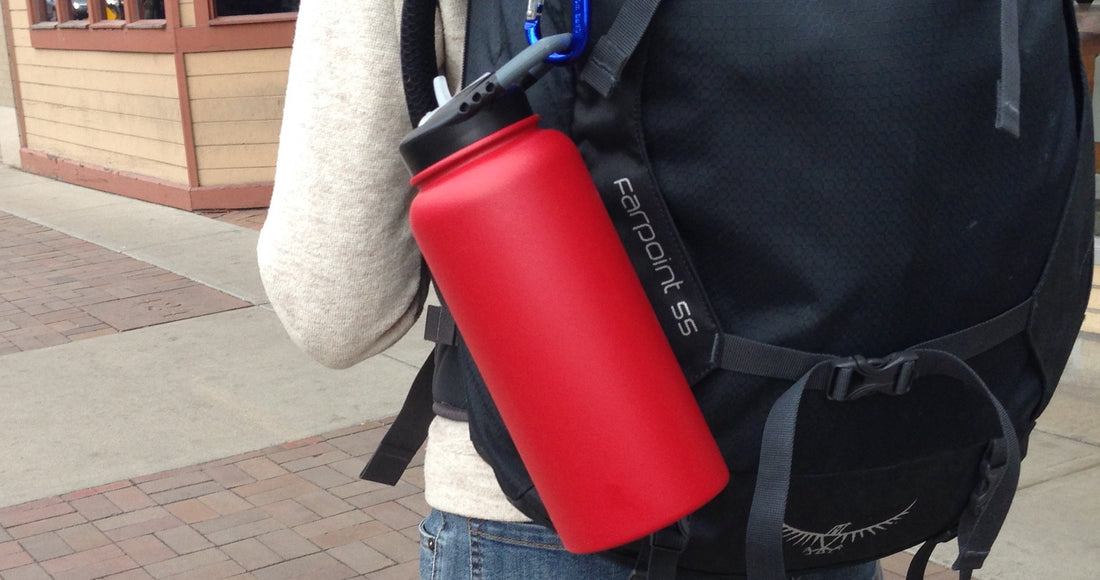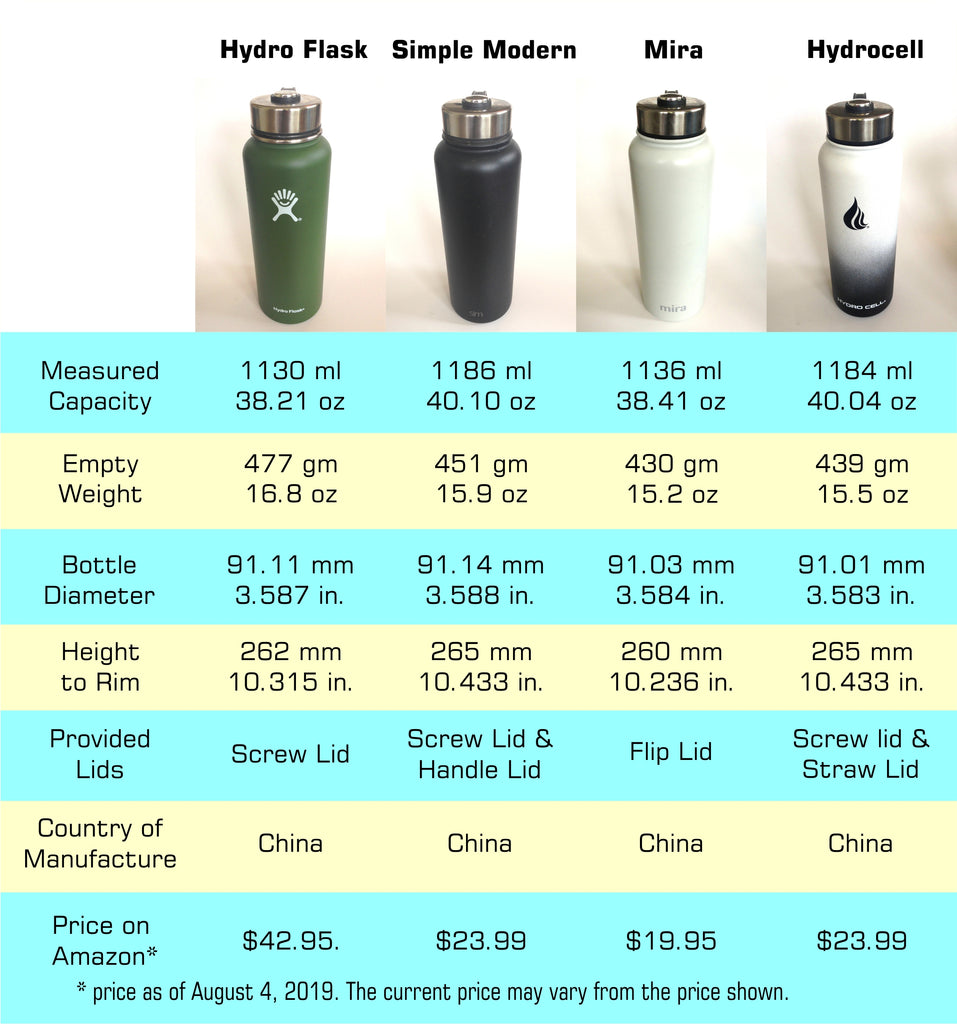
Which vacuum insulated bottle is best? Four popular bottles face off.
Share
Want to keep your coffee hot all day at work? Or your water icy cold while working in the hot sun? If so, you’ll want a vacuum insulated stainless steel bottle with an insulated lid. These bottles have a stainless steel inner liner that holds the liquid, and an outer shell that protects the inner liner with a vacuum between the two layers. Heat will not transfer across a vacuum, so your beverage will stay at the temperature you started with for many hours. Most vacuum insulated bottles claim to keep hot things hot for about 12 hours, and cold things cold for 24 hours. Even the worst bottle in our comparison test exceed these numbers.
These bottles have become extremely popular in the past few years. The market leader is Hydro Flask, an American company located in Bend Oregon, but there are dozens of other choices too. Is Hydro Flask the best bottle? How about the best insulator or the best value? This test seeks answers to these questions.
We took 4 vacuum insulated bottles that sell well on Amazon and put them through the paces. We choose the popular 40 oz size which is large enough to be useful for an afternoon outing, but not so big that it is cumbersome to carry. All the bottles are vacuum insulated stainless steel, and all were purchased new. We measured the dimensions and capacity using precision tools, and these results are listed in the table below. Please note that we measured capacity at the bottom of bottle’s neck where it begins to widen out (about an inch down for the top lip). The Hydro Flask and Mira measured just shy of their stated capacity, but would meet there stated capacity if filled up to the lip of the bottle.

At current prices, the Hydro Flask stands apart as the most expensive option, but is also the heaviest, which may imply sturdier construction. Other than price and a minor difference in capacity, these bottles are all very similar on paper, but how well do they perform in temperature tests?
To find out, we filled them with equal amounts of ice and checked the temperature of the contents of each bottle every 2 hours from 22 hours to 36 hours.

The upright test primarily tests the effectiveness of the vacuum insulation; in this test, the liquid touches the sides of the bottle, but there is an air gap up to the lid. Air is a pretty good insulator by itself, so the insulation in the lid plays a minimal role. In the Hydrocell, the ice had melted by the 32 hour mark, and it performed the poorest in our tests. The other three bottles had some ice at the end of the test, with the Mira just 0.4 degrees warmer than the Hydro Flask, a negligible difference.
The surprise star here is the Simple Modern, which kept the water below 34 degrees the entire test, besting the Hydro Flask by 2.7 degrees, wow! Their description describes a copper layer on the inside of the inner layer of stainless steel, so perhaps this is why it performs so well. Copper has higher conductivity that stainless steel, but lower emissivity; the lower emissivity means that it radiates less energy through the vacuum to the warmer outer wall of the bottle.

Measuring the temperature retention with the bottle on its side highlights the insulation capability of the lid because the liquid is in direct contact with the lid. The ice had disappeared in the Mira and Hydrocell by the 26 hour mark, while it took 32 hours for the simple Modern and Hydro Flask. The Simple Modern again performed best, a full 4 degrees better than Hydro Flask at 36 hours.
It is interesting to note that keeping the Mira and Hydro Flask upright yielded better performance than the top performing Simple Modern when on it’s side. This means that keeping your bottle upright is generally more important to thermal performance than is the quality of your bottle.
The performance of all of these bottles is probably fine for general everyday use. But if you live in a hot climate or spend time in the blazing sun, consider the getting either the Simple Modern or the Hydro Flask for best thermal performance.
The quality of all the bottles seems pretty high, although we noted that the top lip of the Hydro Flask is not quite flat, and all the lids we tested sit slightly tilted, however this did not seem to cause any leaking or performance problems. The slightly greater weight of the Hydro Flask implies better construction, but the difference was minimal, and we are not testing the long term durability.
The Hydro Flask has the most brand recognition, and performed very well, coming in second in thermal performance. At the time of this writing, the Simple Modern costs about $19 less than the Hydro Flask, and with its superior thermal performance and slightly greater capacity, it seems the better value. For those on a budget, the Mira performed well and was about $4 less than the Simple Modern.
See the current price and availability on Amazon:
Want to see how the temperature testing results of the Paravalve insulated straw lid compared to Hydroflasks straw lid? Click Here.
